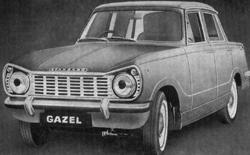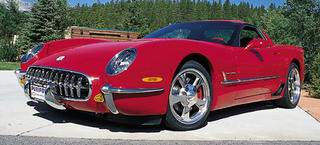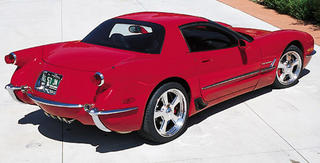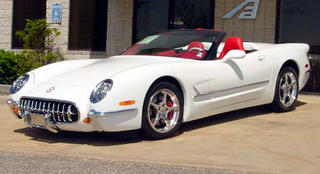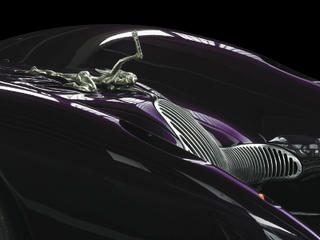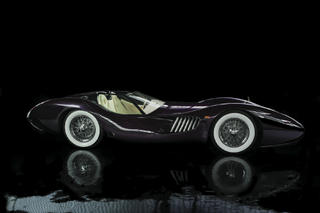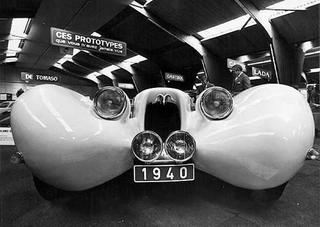

In the 1930s through the 1950s, there were a series of cars made who styling and streamling were inspired by the airplane. The Fascination was also one, but built 20 years after the fascination had dwindled. And if the fantastic claims of one inventor had been true, it could have been a truly fascinating car that ran on what was called an "an electromagnetic motor" that ran off a few batteries.
The Fascination if the spawn of Paul Lewis and was made in 1974 with a then-exotic plastic body, red velour interior and a four-cylinder engine in the tail end between those jet engine rear wheel housings.
In 1937, Lewis came up with the Airomobile, its front-end design is reminiscent of a Ford sedan of the time, but the tapering rear ends with two dorsal-like fins, a pointed tail and a single wheel. A year after developing the basic design, Lewis incorporated as Lewis-American Airways and offered stock in the company. He also hired former Franklin Automobile Company engineers Carl Doman and Ed Marks to join him in the Doman-Marks Engine Company and design and build his car. It was initially priced at $300,but only one prototype Airomobile was made, with an air-cooled 129 cubic-inch four-cylinder, sending 57 horsepower through the front wheels.
In the late 60s (after becoming a successful investor), made the first Fascination and started a car company called the "Highway Aircraft Corp." The motivation for the Fascination wasn't supposed to be the gas engine that eventually powered them. A California investor named Edwin Gray was designing an electromagnetic powerplant called the Nobel Gas Plasma Engine, and claimed that it was good for 60,000 miles before refueling. But the motor (the cars claim to fame) never came to be.
The first Fascination cost more than $200,000 back in 1974, while the electromagnetic motor would have been much more. Lewis felt that with mass production, the Fascination could cost about $5,000.
Basically - the design is very airplace like. Which means not very comfortable when driving on the ground. The engine is hidden from view under the rear windows and has a hatch to access it - the rear "wing" assembly (which sort of look like the end of a Buick) only hides a shallow trunk.



